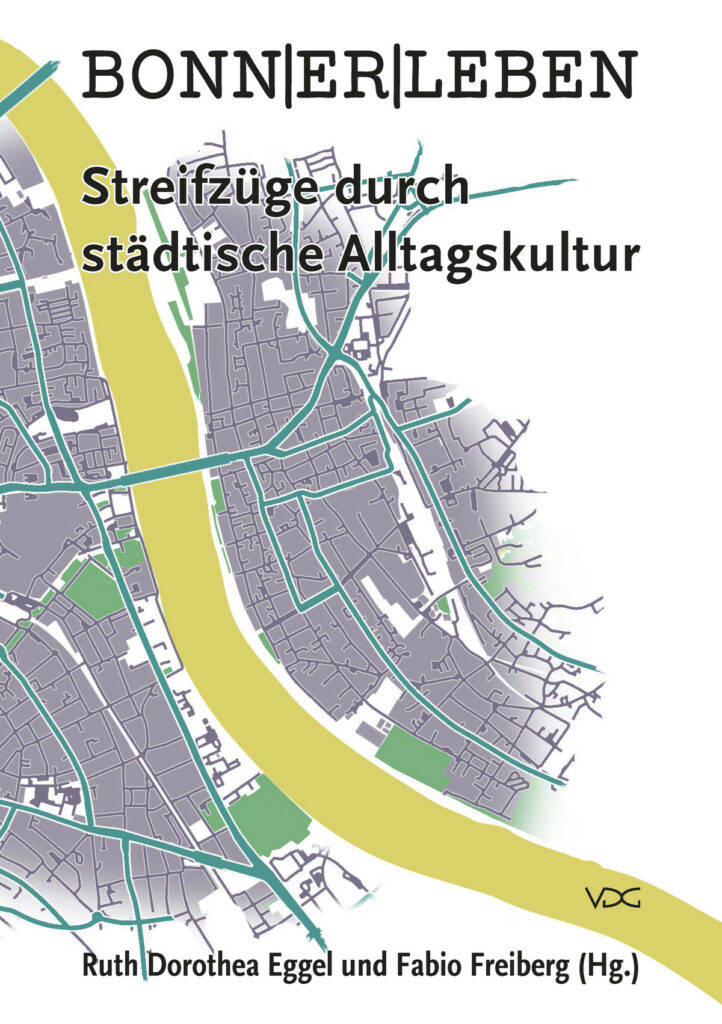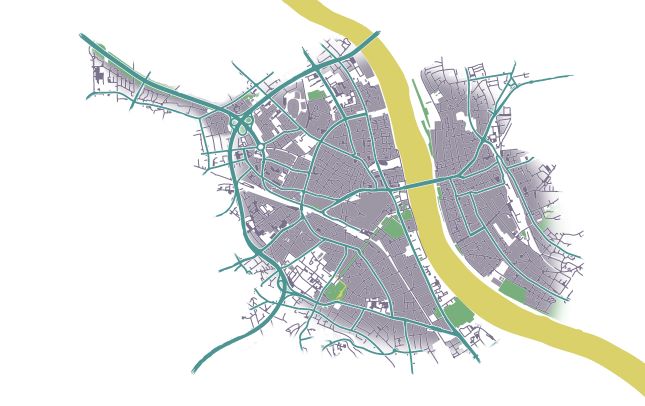A anthropological city guide

About the book: Follow us on ten tours to places of everyday life in Bonn and rediscover familiar facets of the federal city. Even for long-established Bonn residents, this book offers unexpected insights. This book does not present you with tourist attractions, monuments or accounts of places where great history was written. Instead, we take a look at the lives of different women from Bonn. The unnoticed and the banal open up new and unexpected perspectives on the familiar. For it is in the everyday that the city reveals itself and becomes unique in its own way.
Factory buildings become cultural institutions; Beethoven becomes Bonn’s mascot; morals and taboos inscribe themselves in urban space and the right to the city is fought for. We encourage you to engage with unfamiliar perspectives of other city dwellers, to enter into dialogue with your neighbours and invite you to experience Bonn’s urban culture together.
The Project (Student Research Project)
Lead: Ruth Dorothea Eggel, Department of Cultural Anthropology, Institute for Archaeology & Cultural Anthropology Bonn
For one year, 19 students in the Master’s programme “Transcultural Studies/Cultural Anthropology” at the University of Bonn conducted urban anthropological research on different sites in Bonn. The explored the city using qualitative, ethnographic methods, followed by a science-to-public publication & presentation aimed specifically at a non-academic audience. The research results of the urban research project were prepared in an appealing and easy-to-understand way and published in the form of a cultural studies city guide, which was presented in autumn 2021 in the studio_bnx of the Bonn City Museum.
The book “BONN Ι ER Ι LEBEN – Streifzüge durch städtische Alltagskultur” (https://asw-verlage.de/katalog/bonn_er_leben-2281.html) (BONN Ι LIFE – Ramblings through Everyday Urban Culture) shows ten rambles not of tourist attractions, but of everyday Bonn. It discusses how urban culture is negotiated by the residents and asks: Is Bonn Beethoven? What is “normal” in the city? How do places become safe or unsafe? And for whom? Places such as Tannenbusch, Frankenbadplatz or Beuel factory buildings that are becoming cultural institutions are examined. Besides Beethoven as Bonn’s “mascot”, it follows old people in the city, civic engagement and is Queering Bonn.

